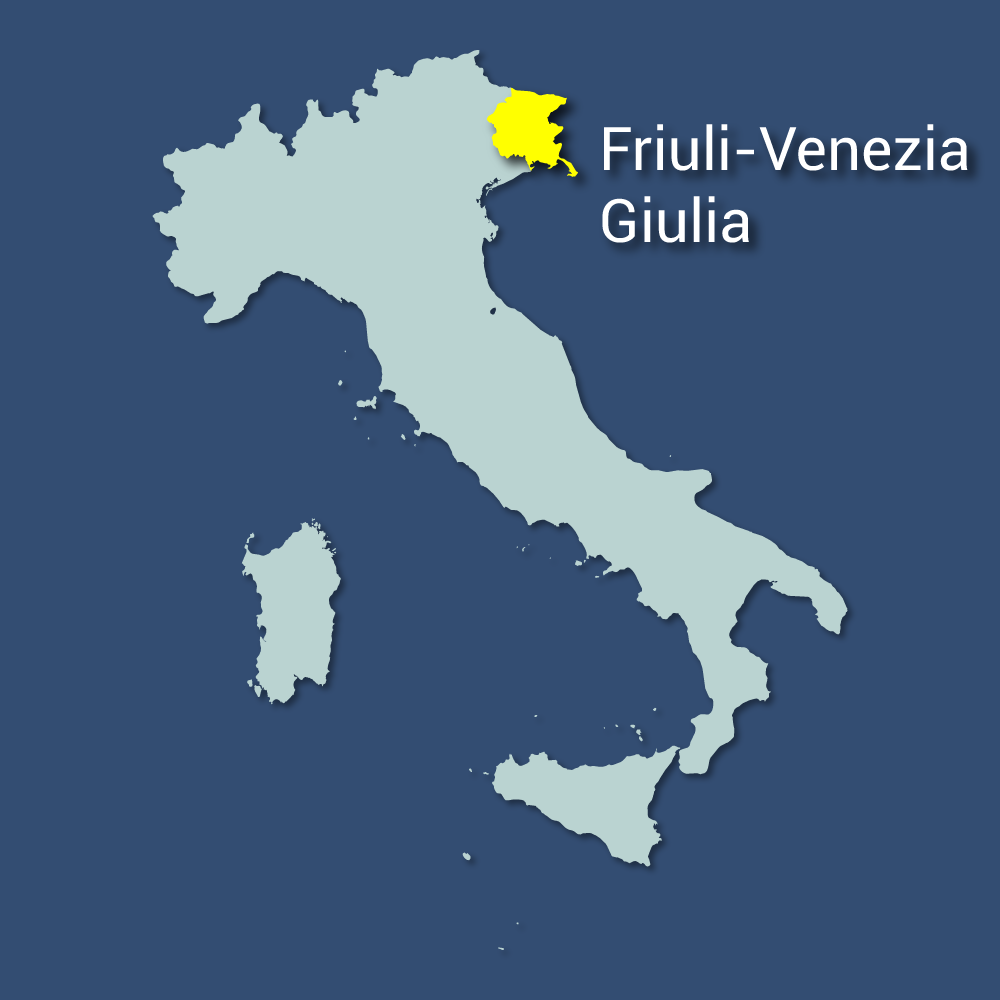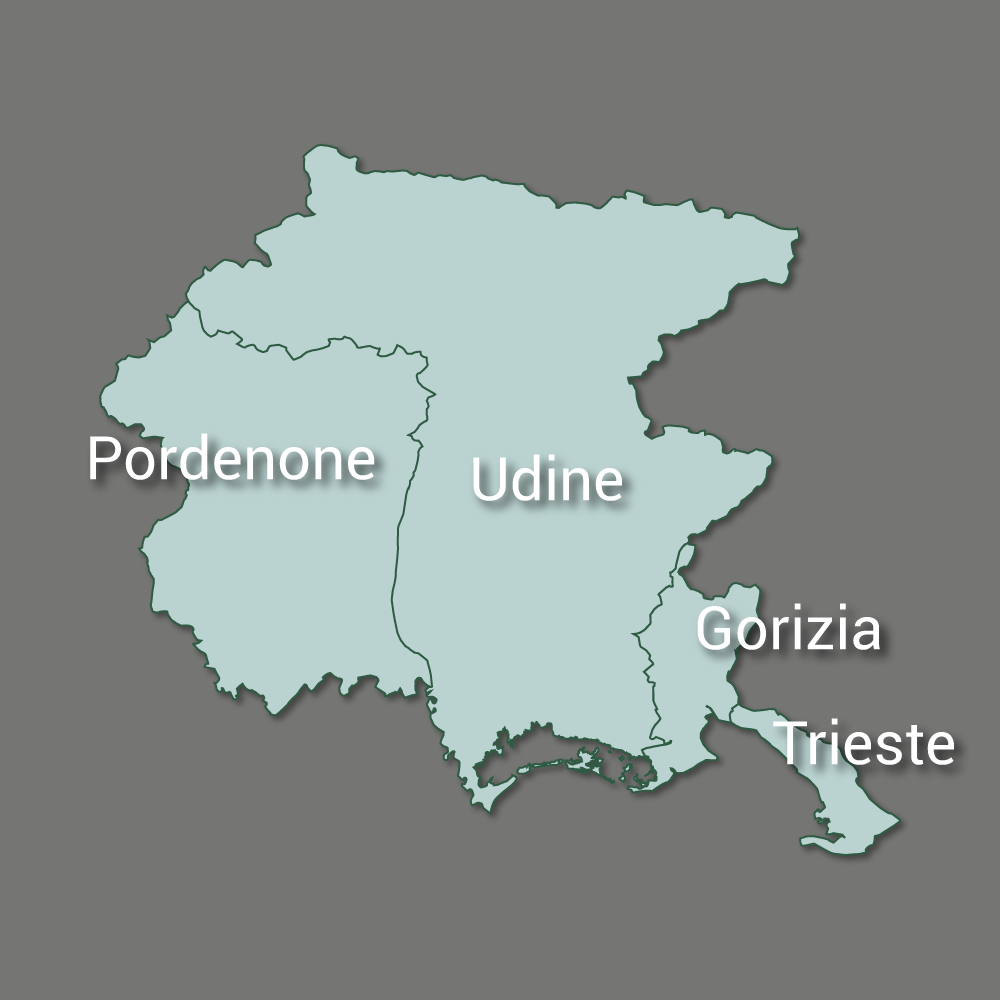
Province of Gorizia
The province of Gorizia, located in the northeastern corner of Italy, is a place where cultures blend seamlessly and history is etched into the landscape. Nestled within the region of Friuli Venezia Giulia and bordering Slovenia, it is a land where the past and present intertwine through architecture, cuisine and language.
This province has been influenced by Roman rule, Habsburg dominion and the events of two world wars. Gorizia has long been a meeting point of Latin, Slavic and Germanic cultures, which makes it unique among Italian provinces. Traces of this rich tapestry can be seen everywhere from Austro-Hungarian villas to bilingual road signs.
 Province of Gorizia, Friuli-Venezia Giulia
Province of Gorizia, Friuli-Venezia GiuliaThe diverse landscape of Gorizia province
Stretching from the Adriatic Sea to the Julian Alps, the province of Gorizia is geographically diverse and offers a remarkable variety of landscapes. Rolling hills, coastal wetlands, rugged karst formations and lush vineyards create a scenic palette that changes dramatically across short distances.
The Collio hills, known for their fertile vineyards, are among the most beautiful parts of the province. Further north lies the mountainous area around Cormòns and Dolegna del Collio, where forests, castles and quiet villages welcome visitors in every season with tranquil charm.
A wine lover’s paradise
One of the province’s main attractions is its status as one of Italy’s top wine regions. The Collio and Isonzo areas are renowned for producing some of the finest white wines in the country, including Friulano, Pinot Grigio, Ribolla Gialla and Sauvignon Blanc. The soil and climate create ideal conditions for viticulture.
Wine tourism is an important part of the local economy. Visitors can enjoy tastings at family-run wineries, stay at vineyard agriturismi and explore scenic wine routes. Many producers follow traditional methods with great respect for the land, while others innovate with international grape varieties.
Cultural crossroads and architectural beauty
The province of Gorizia is not just about nature and wine, it also boasts remarkable architecture and heritage. The town of Gradisca d’Isonzo is a fine example of Renaissance military design, while the nearby fortress of Gorizia offers panoramic views and historical insights. Medieval and Baroque buildings add to the charm.
Visitors will find a strong Central European character in many towns, reflecting centuries of Habsburg influence. Churches, squares and palaces have a grandeur more typical of Vienna or Ljubljana than Rome. This architectural variety gives the province a distinct personality that sets it apart from other Italian regions.
A province marked by wartime memory
Few places in Europe were as deeply affected by the First World War as the province of Gorizia. The Isonzo Front, named after the river that runs through the area, witnessed some of the most intense battles between Italian and Austro-Hungarian forces. Today, this legacy is carefully preserved.
Numerous war memorials, museums and open-air trenches tell the story of this brutal conflict. The Sacrario Militare di Redipuglia is one of the largest war memorials in Europe. Paths for historical walking and cycling routes allow visitors to reflect on the impact of war while enjoying the quiet natural surroundings.
Gastronomy rooted in tradition
The food of the province of Gorizia is as diverse as its people and history. Dishes reflect both Italian and Central European influences, with hearty stews, gnocchi, sausages and goulash appearing alongside seafood risottos and polenta. Everything is made with local ingredients and deep culinary knowledge.
Some of the province’s best-loved specialties include jota, a sour soup of beans and sauerkraut, and frico, a crispy cheese dish from Friuli. Slovenian pastries such as potica are also widely enjoyed. Local olive oil, honey and cheese add to the pleasure of dining in this underrated gourmet destination.
Natural parks and outdoor adventure
For nature lovers and outdoor enthusiasts, the province of Gorizia is full of opportunities. The Isonzo River, with its emerald-green waters, is ideal for kayaking and fishing. The karst plateau provides excellent hiking terrain, and the Val Rosandra offers dramatic cliffs and waterfalls for more adventurous treks.
The protected areas of the province, such as the Foce dell’Isonzo nature reserve, are home to an incredible variety of birds and plants. Cyclists will find an extensive network of well-maintained paths, some of which connect with Slovenia, making Gorizia an ideal base for cross-border eco-tourism.
Local festivals and living traditions
The province of Gorizia has a vibrant calendar of local festivals and events that celebrate its traditions. Whether it’s a wine festival in the Collio, a medieval reenactment in Gradisca or a folk dance in a Slovenian-speaking village, these gatherings showcase the rich cultural fabric of the area.
One notable event is Gusti di Frontiera, held each September in Gorizia town. This festival brings together cuisines from across Europe and beyond, reflecting the province’s multicultural soul. Smaller village fairs offer a more intimate glimpse into rural life, complete with traditional music and crafts.
A gateway to both Italy and Slovenia
One of the most unique features of the province of Gorizia is its location. It serves as both an end point and a gateway. Visitors can easily cross the border into Slovenia and explore destinations like Nova Gorica and the Vipava Valley. The shared history of these towns offers a lesson in peaceful coexistence.
This cross-border dynamic is not just political or geographical, it’s deeply human. Many families straddle both sides, and the area has worked hard to bridge divides created by the 20th century. The twin towns of Gorizia and Nova Gorica are now joined by a symbolic square that celebrates unity over division.
Why visit the province of Gorizia?
The province of Gorizia may not be the most famous destination in Italy, but that is part of its charm. It offers an authentic experience with fewer crowds, a rich mix of landscapes and cultures and a deep historical and gastronomic heritage. It’s ideal for curious travelers seeking depth and beauty.
From vineyard trails and World War I sites to multicultural towns and spectacular natural parks, the province of Gorizia is a place of discovery. Whether for a weekend or a longer stay, it promises moments of wonder, reflection and connection in the heart of Europe’s crossroads.







